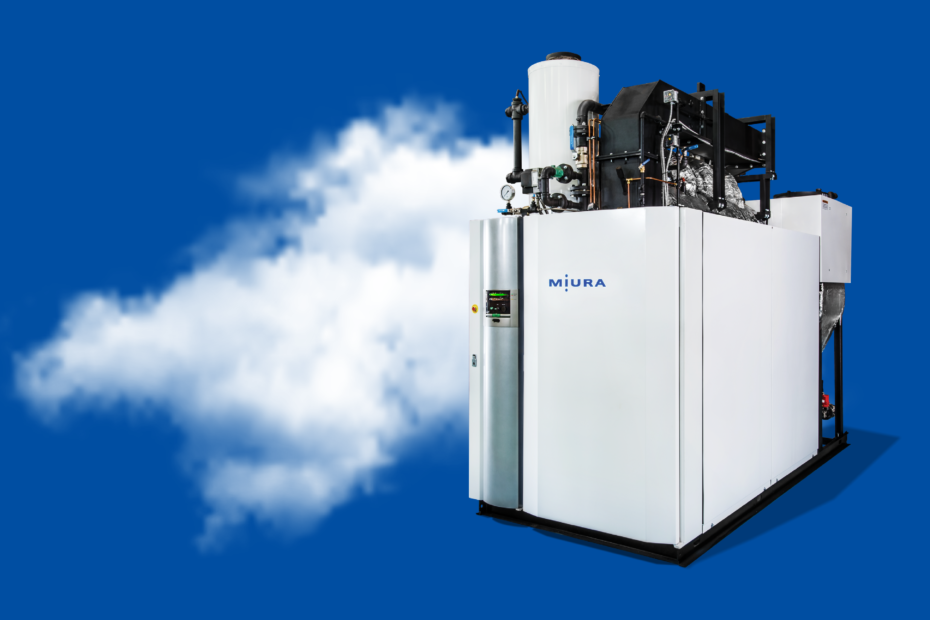How Boiler Economizers Reduce Energy Consumption
Steam boilers use economizers to greatly improve efficiency as the system heats water for steam.
The first economizer, patented in 1845, was used to improve the efficiency of boilers used in steam engines for mills and factories. By the 20th century, almost all steam engine boilers included economizers as a standard feature.
Here, we will explain how modern economizers reduce energy consumption and improve boiler energy efficiency. We’ll also look at the main types of economizers and explain why they’re critical in modern boiler design.
How Boiler Economizers Work
The concept behind an economizer is simple.
Boilers produce heat that is transferred to water, creating steam. During that process, some heat energy is inevitably lost.
Economizers capture heat from the exhaust flue and return it to the boiler by heating the incoming feedwater. By heating the feedwater, the boiler does not have to expend as much fuel to turn the water into steam.
Over the long term, fuel costs are the top expense involved in running a boiler. By greatly improving efficiency, economizers significantly decrease the cost of running a boiler over its lifetime.
Non-Condensing Economizers
In a boiler, the flue gas is the heated gas that exits the boiler via an exit duct known as the flue. The escaping hot gas is a site of heat loss in the boiler system.
Non-condensing economizers work through a basic heat exchange process. They consist of a heat exchange mechanism situated in the flue and are usually finned coils or tubes. As the hot exhaust gases pass across the heat exchange mechanism, heat transfers to the coiled mechanism. The recaptured heat increases the feedwater temperature entering the boiler.
As the captured energy heats the feedwater, less fuel is needed to heat the water to the required boiling temperature.
Non-condensing economizers do not lower the flue gas temperature to below its acid dew point (the temperature, at a given pressure, at which gaseous acids such as SO2 in the flue/exhaust gas will start to condense into liquid acid). Depending on the boiler’s fuel, the resulting condensation can contain particles capable of corroding the flue. Keeping the temperature above the condensation point avoids the problem of potentially corrosive compounds.
Condensing Economizers
Condensing economizers take advantage of a straightforward heat exchange process to recapture the heat escaping in the boiler’s exhaust fumes.
Condensing economizers lower the temperature of the flue gases to below their dew point—the point to which the gases need to be cooled to condense from gas to liquid.
The process takes advantage of a property known as enthalpy. The exhaust gases transfer energy to the heat exchanger, and the resulting temperature drop causes vapor in the exhaust gas to condense and collect on any surface in the economizer. This results in condensation building up in the economizer that must drain.
That may sound complicated, but the practical effect is quite simple: the exhaust gases reclaim a larger proportion of energy.
The Heat Recovery Steam Generator
Economizers are one of the main components of a heat recovery steam generator (HRSG).
An HRSG is a highly efficient heat exchange system that recovers heat from the hot exhaust gas and produces steam. Often, HSRGs reclaim heat from gas turbines, which creates steam to drive steam turbines.
The steam produced by the HSRG may also be directly used in industrial applications.
The economizer’s role in the HRSG is to preheat the feedwater. That water is then turned to steam by the evaporator and then superheated for use in industrial applications.
Reduce Energy Consumption with Miura Boilers
By using technology like boiler economizers, the low water volume design of Miura water tube boilers provides optimal heat transfer and offers fuel-to-steam efficiencies of 85% +/-.
Contact Miura America today or locate a sales rep in your area to learn more about how Miura boiler systems help facilities improve energy efficiency.


